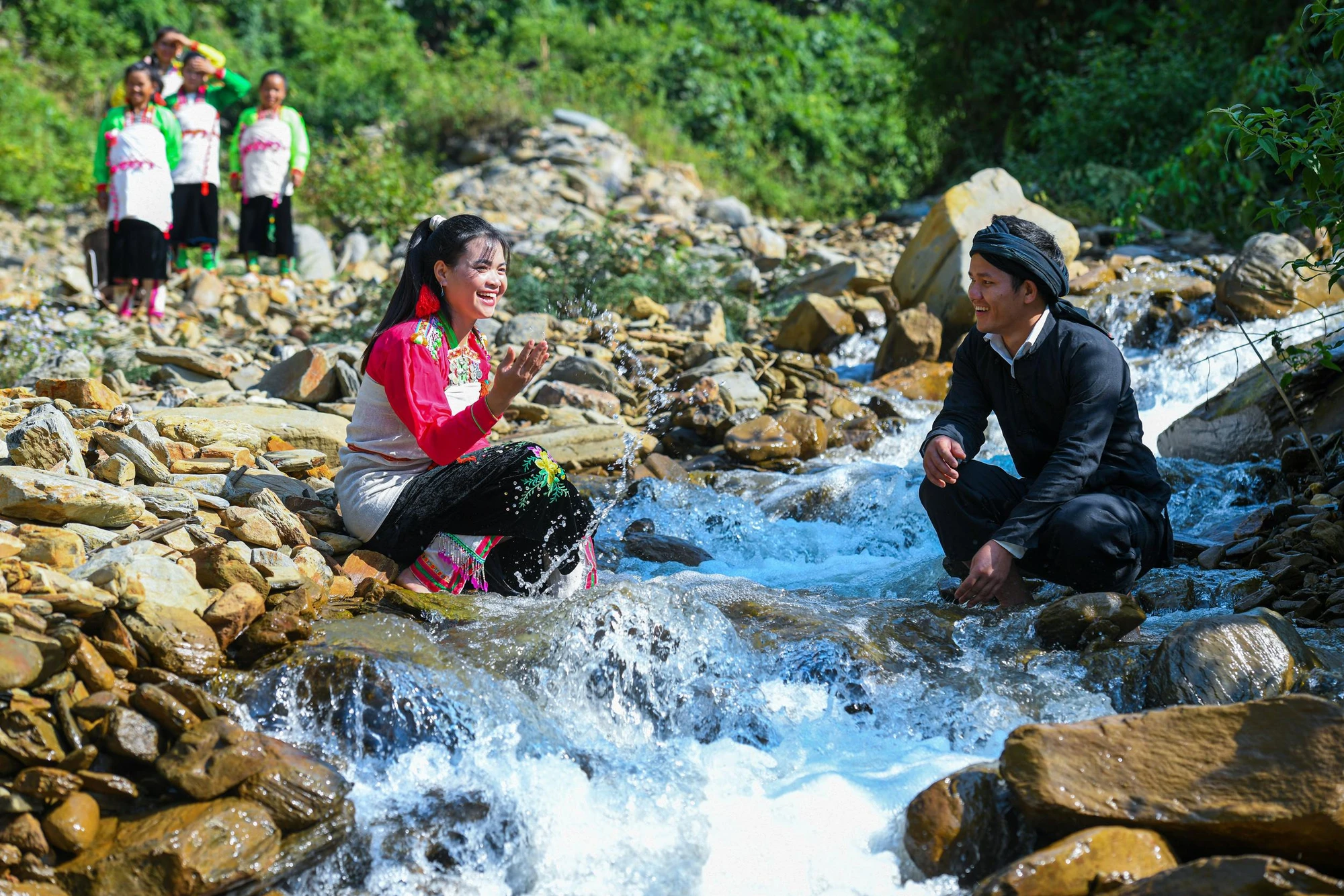MẢNG ETHNIC GROUP
INTRODUCE
- General overview
The Mảng people, also called "Mảng Ư," have two branches: Mảng Lệ (residing in lowland areas) and Mảng Gứng (living in highland areas). The Mảng people predominantly live in Lai Châu province. Their villages are interspersed with several other ethnic groups, including Mông, Thái, Hà Nhì, Dao, and Khơ Mú.
The Mảng people live mainly along two large rivers, the Đà and Nậm Na rivers. Gium Bai is considered by the Mảng people as the birthplace of their ethnic group. Currently, aside from the most densely populated areas like Chăn Nưa and Pa Tần (Sìn Hồ district, Lai Châu province) and Nậm Ban commune (Nậm Nhùn district, Lai Châu province), the Mảng people also live scattered in the Mường Tè region (Lai Châu) and Mường Lay (Điện Biên). Within the Mảng community, they also distinguish between Mảng Lệ and Mảng Gứng. In essence, both types are similar in living habits, farming methods, etc. Mảng Lệ refers to those living in lowland areas, while Mảng Gứng refers to those in highland areas.
Presently, the Mảng ethnic group in Lai Châu has 1,110 households and 5,674 individuals, accounting for 1.26% of the total province’s population. They live in three districts: Sìn Hồ, Mường Tè, and Nậm Nhùn. Of which: Sìn Hồ district has 32 households with 160 residents; Mường Tè district has 218 households with 1,154 people; and Nậm Nhùn district has 860 households with 4,360 residents.
- Village space
"Muy" is a term referring to the residential area of the Mảng people, usually in places with flat terrain and close to water sources. The village’s name is often the name of the stream flowing through the village. Chăn Nưa commune has many small streams, and the Mảng people settle near these streams, such as Huổi Va, Nậm Sập, Pá Bon, Pá Đản, Pá Sập, Nậm Vời, etc.
The Mảng people’s villages are not large, typically consisting of about 15-20 households. If a village has many households, it is divided into three or four hamlets, each comprising around ten households. They build their villages on mountainside/hillside with a moderate slope or relatively flat areas. However, due to the shifting cultivation that still exists in their daily lives, most villages are in inconvenient transportation areas. The nearest village is still about 12-15km away from national or provincial roads.
- Living space
The Mảng people mainly live in stilt houses, which are suitable for the steep terrain of high slopes. The scale of Mảng houses is not large, and the height of the floor is not more than one meter, just enough to shelter pigs and chickens from the weather. The upper part of the floor for human habitation is approximately 2-2.5m high from the floor to the roof. The length of the house does not follow a specific ratio compared to its width.
Today, the houses of the Mảng people remain traditional stilt houses with a reasonably sized area, quite cramped for a family with three generations or more. Each house does not have a yard, garden, or a separate gate. They utilize the empty spaces around the house to make chicken coops (giản chưởi) and rice pounding areas (nhỏa đương.
Regarding the rice pounding tool, it appeared after the Mảng people abandoned the nomadic lifestyle. It is a mortar (mang voòng) made from a large piece of tree trunk, with the mouth and interior of the mortar having a diameter of about 35cm and a height of 60cm. The pestle (pu pé) is small in the middle and large at both ends, with a length of about 150cm and a diameter of about 10cm. This is an essential tool not only in daily life but also carries spiritual significance. The Mảng people do not worship ancestors or follow any specific religion. For them, the mortar and pestle built with the house are considered sacred and a household deity, governing and protecting the family.















